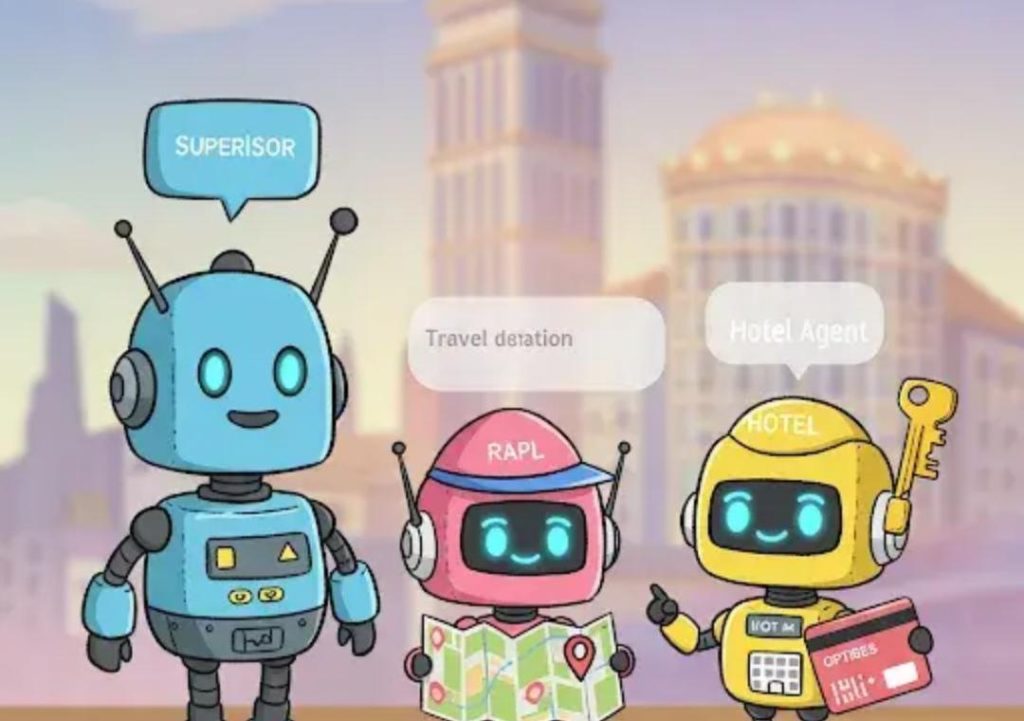
Multi-agent collaboration mimics real team dynamics
In recent years, artificial intelligence (AI) has revolutionized the way we approach various industries, from healthcare to finance, and from customer service to data analysis. One of the most significant advancements in AI is the development of multi-agent systems, which enable different AI agents to collaborate and work together on complex tasks. This modular setup not only simplifies the task of AI development but also mimics real-world team dynamics, making it an effective solution for a wide range of applications.
What are multi-agent systems?
A multi-agent system is a type of AI system that consists of multiple agents, each with its own unique capabilities, knowledge, and goals. These agents communicate and collaborate with each other to achieve a common goal or complete a specific task. Each agent is autonomous and can make decisions independently, but they are also able to share information and coordinate their actions with other agents.
How do multi-agent systems work?
In a multi-agent system, each agent is responsible for a specific task or set of tasks. For example, an agent might be responsible for data collection, another for data analysis, and another for reporting. Each agent uses its own unique capabilities and knowledge to complete its assigned tasks, and then shares the results with other agents to facilitate collaboration.
One of the key benefits of multi-agent systems is their ability to adapt to changing circumstances. If one agent is unable to complete its tasks, other agents can step in to take over, ensuring that the overall goal is still achieved. This flexibility and adaptability make multi-agent systems particularly well-suited to complex, dynamic environments.
Benefits of multi-agent collaboration
So, why is multi-agent collaboration so beneficial? Here are just a few reasons:
- Specialization: With multiple agents, each agent can specialize in a specific task or set of tasks, allowing for greater expertise and efficiency.
- Communication: Agents can communicate with each other to share information, coordinate actions, and resolve conflicts.
- Flexibility: Agents can adapt to changing circumstances and adjust their actions accordingly.
- Scalability: Multi-agent systems can be easily scaled up or down to meet changing demands or requirements.
- Improved accuracy: By combining the strengths of multiple agents, multi-agent systems can achieve more accurate results than a single agent.
Real-world applications of multi-agent collaboration
Multi-agent collaboration has a wide range of real-world applications, including:
- Healthcare: Multi-agent systems can be used to analyze medical data, identify patterns, and make predictions about patient outcomes.
- Finance: Agents can collaborate to analyze financial data, identify trends, and make investment recommendations.
- Customer service: Multi-agent systems can be used to provide personalized customer service, routing customers to the most qualified agent for their specific needs.
- Data analysis: Agents can collaborate to analyze large datasets, identify patterns, and make predictions about future trends.
- Robotics: Multi-agent systems can be used to control and coordinate the actions of multiple robots, enabling them to work together to complete complex tasks.
Conclusion
In conclusion, multi-agent collaboration is a powerful tool for achieving complex goals and completing complex tasks. By enabling different agents to specialize, communicate, and collaborate across tasks, multi-agent systems create digital workflows that mirror human teamwork, but at machine speed and scale. Whether you’re working in healthcare, finance, customer service, data analysis, or robotics, multi-agent collaboration is an effective solution that can help you achieve your goals.
News Source



